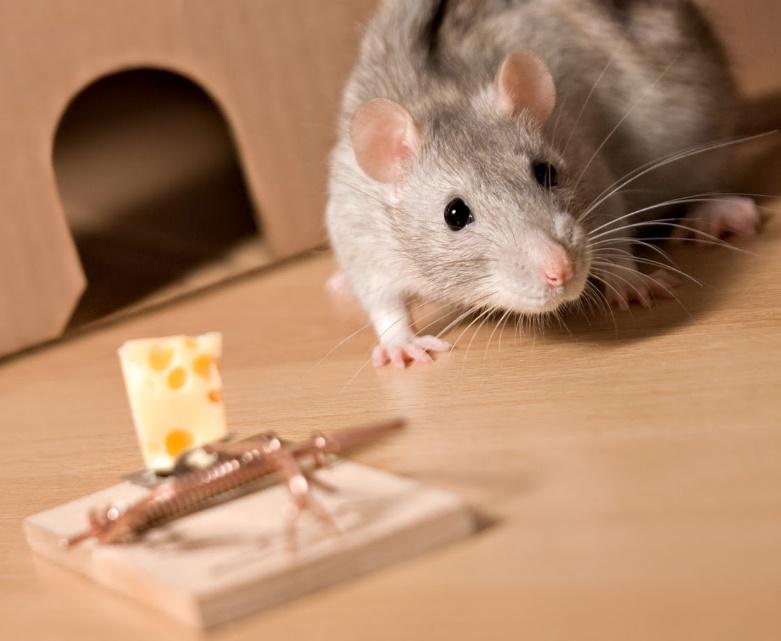 If you suspect rats or mice have taken up residence in your home this fall, you are not alone. According to a survey by the National Pest Management Association, 29 percent of Americans have dealt with a rodent infestation at home, and 45 percent — almost half — of those infestations happened during the fall or winter.
If you suspect rats or mice have taken up residence in your home this fall, you are not alone. According to a survey by the National Pest Management Association, 29 percent of Americans have dealt with a rodent infestation at home, and 45 percent — almost half — of those infestations happened during the fall or winter.
While spring and summer do have their share of rodent infestations, rodents are most common in the fall since mice and rats will seek cozy places where they can escape the upcoming cold. Once a few rodents find their way inside, their population can increase rapidly. A female mouse can give birth to up to 12 offspring every three weeks, and rats reproduce just as quickly.
The good news is that if you’re already aware of a rodent problem, you are poised to take care of it before it becomes any worse. Here’s what you need to know about identifying, treating, and preventing mouse and rat infestations in the cooler months.
How Can You Tell Whether You Have Mice or Rats?
The signs of rat and mouse infestations are quite similar. Both animals are most active at night, so you may hear them scurrying about in the walls or attic. They may leave greasy paw prints on the floor or gnaw marks on the corners of doors or baseboards.
If you happen to spot one of the animals, you should be able to tell whether it is a rat or a mouse quite easily. Mice are about 7 1/2 inches long, and they have hairy tails and triangular noses. Rats can be up to 18 inches long, and they have hairless tails and blunt noses.
If you’re not able to spot the animals in person, the most likely evidence you will find is droppings. Look closely at any droppings they’ve left behind. If the droppings are about 3/4 inch long with blunt ends, you have rats. Mouse droppings are much smaller with pointed ends. Other signs of rodents are damage to food containers (boxes, bags, etc.) and/or damage to your home (such as the typical “mouse” hole along a baseboard)
How Do They Get In?
Once you figure out how mice or rats get into your home, you’ll be better able to keep others from invading. Mice may come in through tiny gaps in the foundation, gaps around wires or plumbing, other utility connections, or improperly fitting doors/windows/ vents, especially at grade level (but they can climb very well so do not discount areas above the grade). Mice can get through a hole the size of a dime.
Rats need slightly larger openings to fit through, but they can still enter through holes the size of a quarter. If they find an entry point that’s not quite large enough, they will just gnaw the edges to make it larger. Inspect your foundation, doors, and windows closely for any gaps that the rodents could be entering through, and seal them off with the proper building material for the area.
How Do You Get Rid of Mice or Rats?
Sealing off potential entry points is a good first step, but then you’ll want to call an exterminator to lay out traps and baits. Since baits are poisonous and traps must be carefully placed in order to actually catch rodents, you are best off leaving these steps to the professionals. In addition because of recent EPA decisions the professional can obtain materials the consumer cannot.
You should also take steps to eliminate potential resources in and around your home (food, water, and nesting materials). If you have fruit trees on your land, rake up any fallen fruits so they don’t attract rodents who are desperate for food in the fall and winter. Pick up your pets’ food at night, keep all of your food in sealed bins, and keep a lid tightly on your trash can.
What Damage Should You Check for After an Infestation?
Once your home is free of rodents, make sure you look over the home for any damage they may have caused. Check your electrical wiring for any chew marks. If you do see chew marks, hire an electrician to replace those damaged wires, which could be a fire risk. Look over PVC pipes, too, and call a plumber if you see any gnaw marks on them.
Check for gnaw marks on wooden furniture, doors, and baseboards. You may be able to have the gnawed areas sanded down and refinished.
If you suspect mice or rats may be sharing your space this fall, contact the experts at A-Alert Exterminating Service, Inc., today.


